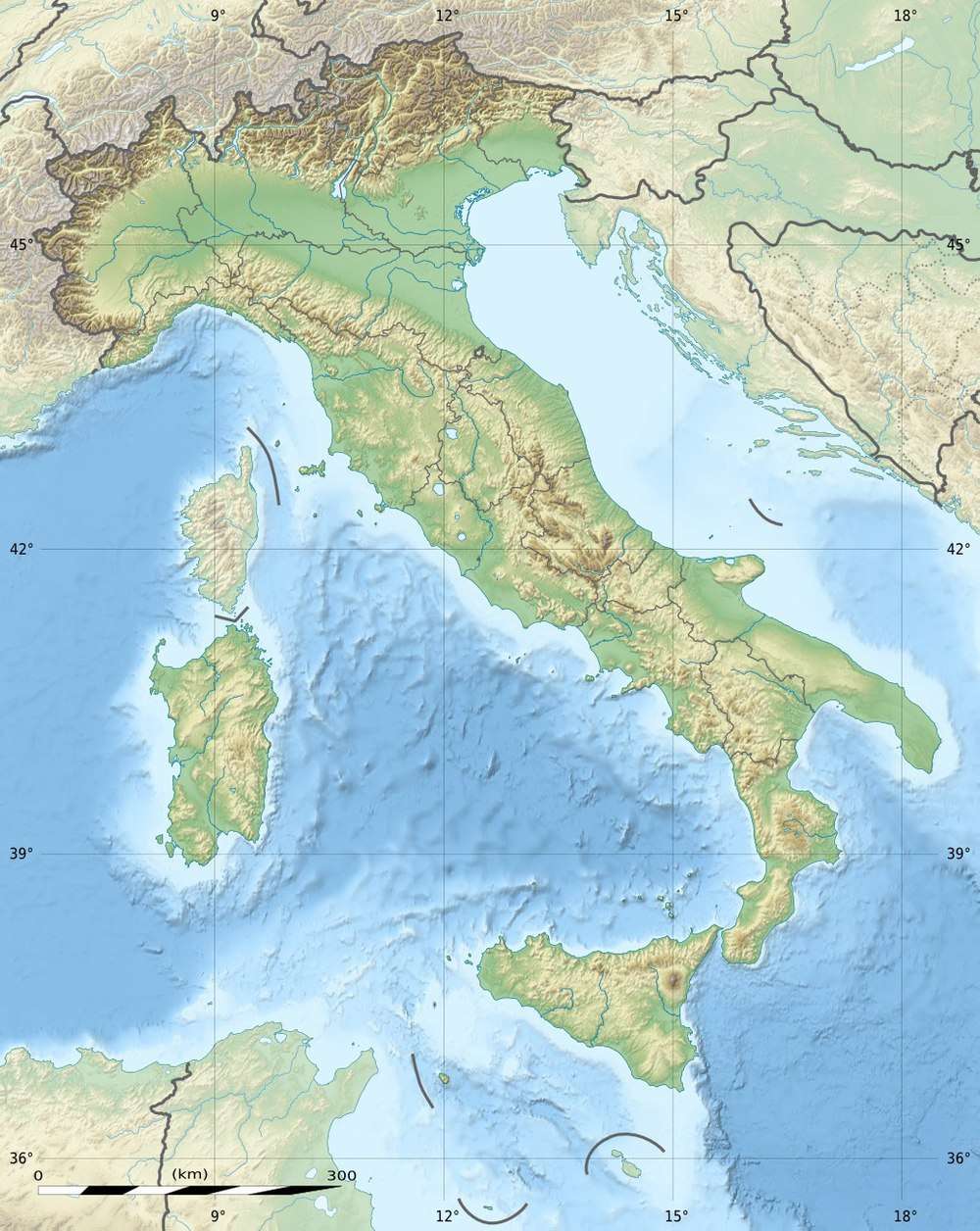1349 Apennine earthquakes
On 9 September 1349, an earthquake sequence began in Italy's Apennine Mountains that severely affected the Molise-Latium-Abruzzi regions. Four moderate-large earthquakes[2] devastated towns and villages across the central Italian peninsula, with damage even reported in Rome. These earthquakes originated from the Apennine fold and thrust belt fault network, with the first and most destructive shock's epicenter originating from the north-west Campania region. Paleoseimological data gathered from scarping, fault length, and collapsed sections of Venafro's Roman aqueduct indicates the epicenter of the main shock was likely along the Aquae Iuliae fault.[1] The fault suspected of causing this earthquake occurred on the Aqua Iuliae fault along the Molise-Campania border.[3]
 | |
| Local date | 9 September 1349 |
|---|---|
| Magnitude | 6.7[1] |
| Epicenter | 41.454308°N 14.123227°E |
| Areas affected | Italy (Latium, Molise, Campania, & Abruzzo regions) |
Earthquakes
The first earthquake, with an estimated magnitude of 6.7, struck on 9 September in the north-west Campania southeast of the Molisano town of Venafro.[1] The second quake struck on 10 of September near L'Aquila. Both quakes caused widespread damage to not just towns and cities but infrastructure like Roman aqueducts and bridges. The poet Petrarch describes damage in Rome to the city's monuments.[1] The western side of the four-story Flavian Amphitheatre collapsed towards the caelian hills, leaving a massive mound of travertine and tufa rubble Rome later quarried for construction materials. [4]
Aftermath
The town of L'Aquila has been described as being almost "completely destroyed."[5]
References
- Galli, Paul A. C.; Naso, José A. (15 September 2008). "Unmasking the 1349 earthquake source (southern Italy): paleoseismological and archaeoseismological indications from the Aquae Iuliae fault". Journal of Structural Geology. 31 (2): 128–131, 145. CiteSeerX 10.1.1.1034.234. doi:10.1016/j.jsg.2008.09.007.
- Giudoboni, Emanuela (August 2012). "Ancient and Medieval Earthquakes in the Area of L'Aquila (Northwestern Abruzzo, Central Italy), A.D. 1–1500: A Critical Revision of the Historical and Archaeological Data". Bulletin of the Seismological Society of America. 102 (4): 1606. Bibcode:2012BuSSA.102.1600G. doi:10.1785/0120110173.
- Galli, Paolo Antiono Costantino; Nasto, Jose Alfredo (2 May 2008). "Unmasking the 1349 earthquake source (southern Italy): paleoseismologicaland archaeoseismological indications from the Aquae Iuliae fault". Journal of Structural Geology. 31 (2): 128–149. doi:10.1016/j.jsg.2008.09.007 – via JSTOR.
- The Works of Lord Byron. 2. J. Murray. 1899. p. 424.
- Modena, Claudio; Porto, F. da; Valluzzi, M. R. (2016-11-03). Brick and Block Masonry: Proceedings of the 16th International Brick and Block Masonry Conference, Padova, Italy, 26-30 June 2016. CRC Press. p. 2464. ISBN 978-1-4987-9592-0.